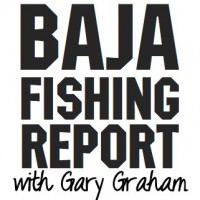
This month, we have added a new feature: This Month’s “Bonus Spot.” See Campo Rene, Estero El Coyote below! These will be places that are seldom mentioned in the report that I have found appealing. If you have a spot that you would like to share, let me know @ thatbajaguy@gmail.com …
Although January underscored that winter has begun, there were some bright spots, despite the low temperatures recorded in California and Baja. The bluefin tuna saga continued with schools showing down the Baja Coast. The commercial tuna fleet fishing them filled their quota in less than three weeks.
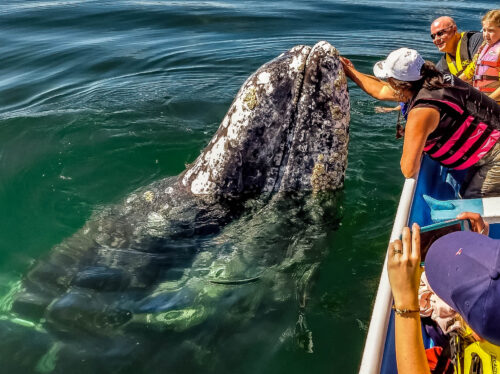
Another sure sign of winter is the whale watching – well underway from Magdalena Bay down the Pacific Coast of Baja Sur and back up the East Coast of the Sea of Cortez to Loreto.
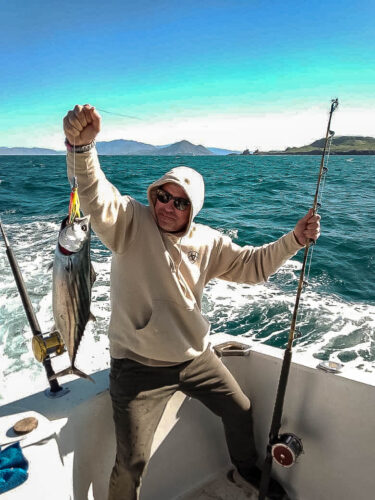
From Coronado Islands to Ensenada, topwater action for the notorious 3-B’s — bonito, barracuda, and bass — are likely targets on good weather days. And then, there is always the backup of good bottom fishing for cod ranging from ling to cow, plus a few flat rascals (halibut) to round out your catch.
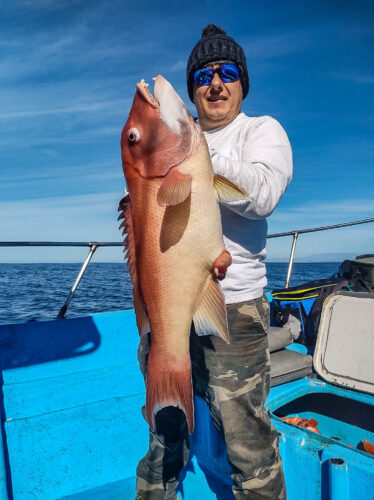
San Quintín has local and visitinganglers in the area. They have managed to capitalize on the sporadic good weather days with yellowtail, bonito, and a variety of cod and halibut.
Bahía Asunción Offshore action continues at a slow pace, with yellowtail dominating the catch. However, as the sea temps continue to cool, some recent visitors have opted to remain ashore.
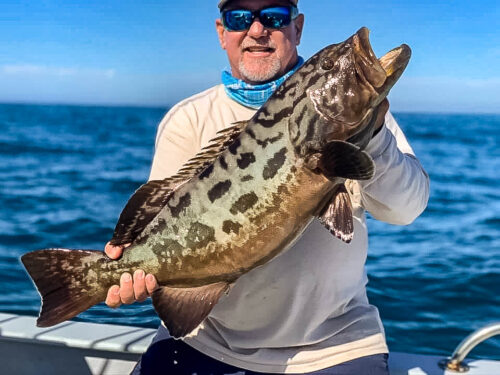
Whileit may be a bitearly, La Bocana is definitely a bucket-list location as spring approaches with trophy-sized grouper bottom fishing!
THIS MONTH’S BONUS SPOT
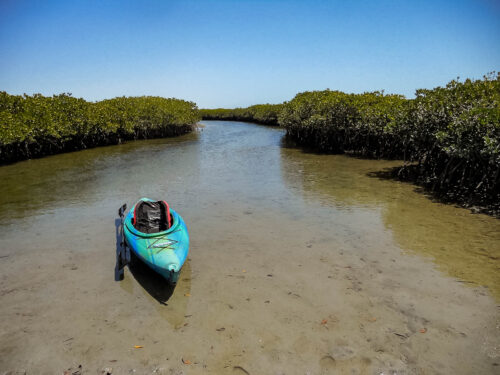
Campo Rene, Estero El Coyote — located below Punta Abreojos. Like many mangroves in Mexico, its natural beauty is part of the attraction. There is an RV Park, launch ramp, and miles of mangrove channels to explore. (google it)
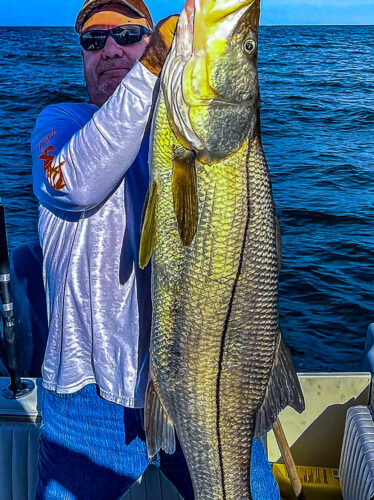
Lopez Mateos\Magdalena Bay Whale watching dominates the “on-the-water” activity this time of year. However, sportfishing is also an option. Recent activity has included trophy-sized black snook, a variety of grouper, and other bottom fish.
At Cabo San Lucas, the phenomenal billfish bite remains the highlight. Some boats continue to rack up double and a few triple-digit releases in a single day. In addition, an excellent dorado and an occasional yellowfin tuna bite are found offshore. While inshore, look for dorado, sierra, and even yellowtail.
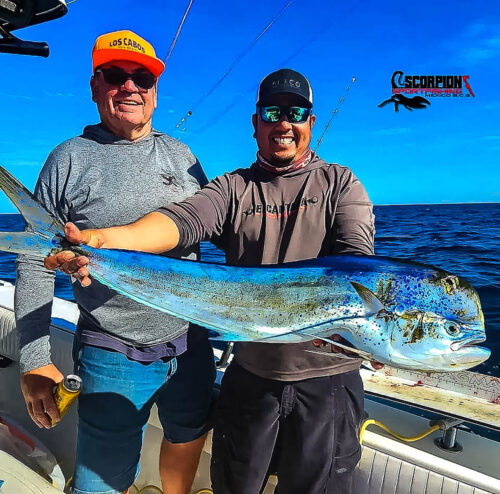
Puerto Los Cabos The main fishing grounds recently have been from the Gordo Banks, Punta Gorda, and Cardon to Iman Bank. Yellowfin tuna up to 80 pounds have been found on the Iman Bank, mainly drift fishing with strips of squid, no big numbers at all. Still, if putting in a reasonable effort, there are chances of quality yellowfin. Most anglers are lucky to land one, but some land a couple. The winds have been a factor on these grounds, making it hard at times, with too fast of a drift. Lots of bait are needed.
Dorado are spread out, striking more often on trolled ballyhoo with sizes to 15 pounds. The average has been two to four per boat. Last weekend a few wahoo were landed. One weighed 52 pounds. Now the water is too cold for these fish.
Sierra and juvenile roosterfish are starting to be seen; hopefully, supplies of sardina will hang in there because they rely on those baitfish during the winter season.
At East Cape, if it lives up to its reputation, the north winds can be expected to be intermittent during the next few months. Because of recent winds, few boats have ventured out, even in the early mornings.
However, recently there have been numerous schools of sardina close to shore from the Spa south past Rancho Leonero. There were enough to entice some anglers to fish in boats and on foot, even on the beaches.
The beach gang was rewarded with catches of several popular species, including ladyfish, small jacks, a few pargo, and cabrilla. While the boat gang, fishing a little farther out, scored a few small dorado and sierra.
La Paz Recently, it has been cold and windy, so fishing opportunities have been limited, which is typical for this time of year. Most folks who were out are locals who have flexible schedules and can pick and choose which days or even which hours are best for fishing. Not surprisingly, there are fish to be caught.
If you can make your way across the rough channel to the south end of Cerralvo Island, there has been a little jag of 50 to 100-pound tuna. Nothing wide open, but a few have been hooked, especially by commercial panga fishermen. It can be a rough ride out there, especially with the winds roaring down the channel.
As Loreto endures the seasonalnorth winds, there are still enough calm days to entice anglers to scour the local banks. Some of the action for yellowtail had shifted over to La Cholla, with fish in the 15-pound range landed.
Live mackerel are available at the bait receiver for the earliest boats. Hopefully, that will continue to be the case.
Jig fishing has been the quickest way to land yellows. Fish from 8 to 24 pounds, with most fish averaging 15 pounds, are being caught in this manner.
Trolled surface bait have been totally ignored. Surface action typically starts when the waters warm up in April.
If fishing is slow and you feel a need to get out on the water, whale season is off to an early start in Baja. In Loreto and the waters just south of Carmen Island, humpback whales have been spotted, and one blue whale has popped up in the nearby waters near Danzante.
Mulegé and Conception Bay Recently, the yellowtail were hanging out around the pinnacles outside the bay. Inside, the bite has been slow for jacks, sierra, and a few small roosterfish.
Bahía de Los Ángeles and Gonzaga I have heard a few sketchy reports of limits of yellowtail caught using jigs down deep.
Gary Graham – That Baja Guy
Photojournalist
https://bajabytes.com/about/
Cellular (760) 522 3710
Weekly Podcast

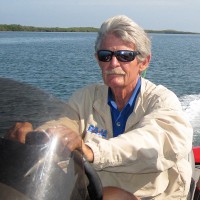
With more than five decades of fishing experience – from light tackle and fly to offshore billfish – Gary Graham has experienced all aspects of fishing in the Southern California and Baja waters. His observations of species behavior, tackle and techniques are always from his unique perspective, earning him the respect of his peers as well as anglers who eagerly follow his Baja reports and features.
Gary maintained a home at East Cape in Baja Sur for more than 18 years and still spends nearly half of each year exploring the entire peninsula in his self-contained Roadtrek van. He observes everything Baja, from the mysteries of a tide pool on a deserted Baja beach filled with tiny sea creatures to the largest billfish in the sea.
